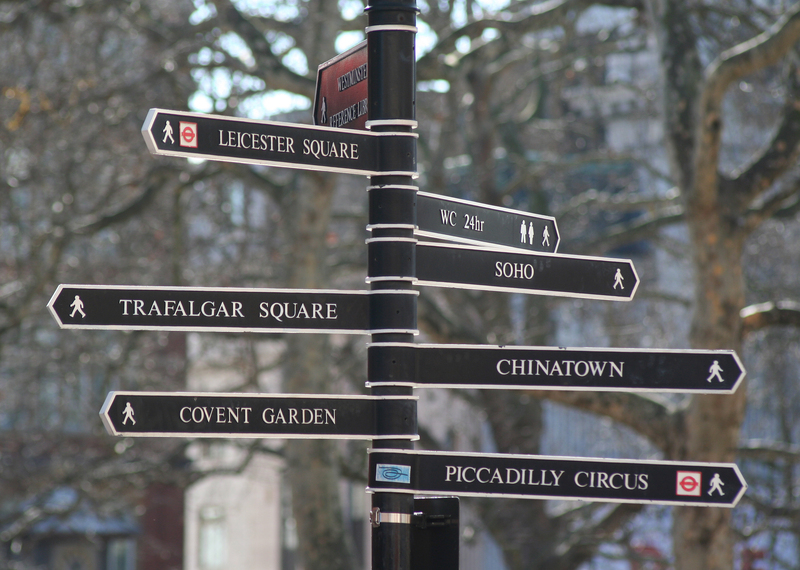Essential Tips for a Mold-Free Bathroom Space
Posted on 19/08/2025
Essential Tips for a Mold-Free Bathroom Space
Maintaining a clean, healthy, and mold-free bathroom is essential for the well-being of your household. Your bathroom, due to its high humidity and frequent temperature fluctuations, can become a breeding ground for mold and mildew. Beyond its unsightly appearance, mold can cause unpleasant odors and pose significant health risks, especially for people with allergies or respiratory problems.
In this comprehensive guide, you'll discover practical, actionable advice for creating and maintaining a mold-resistant bathroom area. From daily routines to long-term preventive strategies, these tips will help ensure that your bathroom remains fresh, clean, and most importantly, free from mold growth.
Understanding Bathroom Mold: Why It Happens
Before you can effectively tackle bathroom mold prevention, it's important to know why bathrooms are susceptible to mold in the first place.
- Moisture: Showers, baths, and even sinks raise humidity levels, creating a damp environment perfect for mold spores to settle and thrive.
- Lack of ventilation: Poorly ventilated bathrooms trap moisture, further inviting mold development on walls, ceilings, grout, and fixtures.
- Warmth: Bathrooms generally maintain a warmer temperature, further accelerating the mold life cycle.
Common Areas Where Mold Grows in Bathrooms
- Tile grout and caulking
- Ceilings, especially above the shower or bath
- Under sinks and around plumbing fixtures
- Behind or beneath the toilet
- Shower curtains and bath mats
- Window sills and frames
*Knowing these hotspots lets you focus your efforts for a consistently mold-free bathroom environment.*

Top Tips for a Mold-Free Bathroom
1. Prioritize Proper Ventilation
Perhaps the most crucial step to keeping your bathroom mold-free is ensuring adequate airflow.
- Install or upgrade an exhaust fan. Run it during showers and for at least 20 minutes afterward to remove excess humidity.
- Open windows when possible. Allowing fresh air to circulate quickly reduces dampness.
- Keep interior doors slightly open. This promotes cross-ventilation, especially in small bathrooms.
2. Clean and Dry Surfaces Regularly
Regular cleaning is essential for a mold-free bathroom space. Mold spores can settle quickly, so establish a few key routines:
- Wipe down shower walls, doors, and tiles after every use. Squeegees and microfiber cloths remove water that might otherwise linger and foster mold growth.
- Wash bath mats and towels frequently. These items absorb moisture and are common sites for hidden mold.
- Clean hard-to-reach surfaces at least weekly. Don't neglect behind toilets, underneath sinks, or high corners where condensation collects.
Tip: For daily upkeep, a simple white vinegar and water solution is effective at killing and inhibiting mold.
3. Promptly Address Leaks and Drips
Undetected leaks from pipes, faucets, or showerheads are major contributors to bathroom mold. Quickly repair any leaks or pooling water to prevent moisture accumulation.
- Inspect pipes, taps, and seals regularly for signs of dampness or deterioration.
- Address loose tiles or cracked grout right away. Even minor water infiltration behind tiles or caulking can lead to long-term mold issues.
A dried out, well maintained bathroom is the cornerstone of a mold-free bathroom area.
4. Install Mold-Resistant Materials
If you're renovating or building a new bathroom, choose materials that are inherently resistant to moisture and mold.
- Opt for mold-resistant drywall ("green board") rather than standard wallboard in wet areas.
- Use quality silicone caulk and epoxy grout, both designed to repel water and deter mold better than standard materials.
- Install tiles, paint, and flooring specifically labeled as mildew-resistant.
5. Control Humidity with Dehumidifiers
For bathrooms with persistent humidity (especially basement bathrooms), consider running a dehumidifier in addition to improving ventilation.
- Portable dehumidifiers are ideal for larger or windowless bathrooms.
- Set the humidity level below 50% to inhibit mold growth.
6. Keep Clutter to a Minimum
Clutter provides more surfaces for moisture and restricts airflow, which can promote mold.
- Minimize the number of bottles, cloths, and other items in your shower or bath area.
- Organize shelves and store personal items in closed cabinets when possible.
7. Use Mold-Inhibiting Products
There are a variety of cleaning sprays, tile sealants, and additive products made to combat mold and mildew in the bathroom:
- Apply grout or tile sealants annually to prevent water penetration that can lead to mold behind walls and tiles.
- Opt for bathroom cleaners with mold-inhibiting ingredients, such as hydrogen peroxide or baking soda.
Preventing Bathroom Mold: Maintenance Checklist
To make the process simple, use this bathroom mold prevention checklist and revisit it regularly:
- Run vent fans or open windows every time you shower or bathe.
- Wipe down all wet surfaces after every use.
- Launder towels, bath mats, and curtains weekly.
- Keep clutter off surfaces to promote airflow.
- Address leaks, drips, or broken seals immediately.
- Deep clean hard-to-reach and hidden areas monthly.
- Periodically check for musty odors or visible mold and tackle promptly.
- If renovating, use mold-resistant materials wherever possible.
DIY Mold Removal from Bathroom Surfaces
If you notice a small patch of mold, don't panic--DIY cleaning solutions can restore a mold-free bathroom space. For stubborn or recurring mold, particularly on porous surfaces or in large quantities, seek professional assistance.
Safe and Effective Natural Cleaners for Mold
- Vinegar: Spritz undiluted white vinegar on the affected area, let sit for at least an hour, then scrub and rinse thoroughly.
- Baking soda: Mix with water to form a paste, apply directly, scrub gently, then rinse clean.
- Hydrogen peroxide (3%): Spray onto mold, let stand 10-15 minutes, then clean as usual.
Important: Always wear gloves and a mask when cleaning mold, and ensure good ventilation.
How to Keep a Bathroom Mold-Free Year Round
Vigilance and consistency are the keys to a permanently mold-free bathroom environment.
- Ventilate every day, even if you haven't used the bathroom. Open windows briefly or run the fan for a few minutes each morning and evening.
- Immediately dry spills and splashes. Use absorbent cloths to remove any standing water from the floor or ledges.
- Use mildew-resistant shower curtains and liners. Wash them at least monthly to prevent spores from taking hold.
- Consider a humidity meter. This allows tracking humidity levels so you can take action when things get too damp.
- Keep a bottle of mold remover handy, and treat even small outbreaks at the first sign.

Mold-Free Bathroom FAQs
-
What are the health risks of mold in bathrooms?
Prolonged exposure to mold can cause allergies, worsen asthma, trigger sinus problems, and irritate skin and eyes. Black mold, in particular, is especially dangerous for vulnerable individuals. -
What is the best temperature to discourage mold in bathrooms?
Maintain bathroom temperatures below 75?F (24?C) when possible to slow mold growth. -
Are homemade cleaning products as effective as commercial ones?
For most household surfaces, vinegar, hydrogen peroxide, and baking soda are highly effective. Always spot test before wider application. -
When should I call a professional for mold removal?
If mold covers an area greater than 10 square feet, or if you have respiratory sensitivities, consult an expert for safe remediation. -
How often do I need to clean for a mold-free bathroom?
Light daily cleaning and weekly deep cleans are recommended for the best prevention.
Conclusion: Enjoy Your Fresh and Healthy Mold-Free Bathroom Space
With the right habits, cleaning products, and thoughtful design choices, you can create a bathroom that's resistant to mold year-round. Pay special attention to ventilation, moisture management, surface cleaning, and regular inspections--these are the cornerstones for achieving and maintaining a mold-free bathroom.
*By following these essential tips and making bathroom mold prevention part of your regular routine, you'll enjoy a cleaner, safer, and more attractive bathroom space for years to come.*
- Reduce humidity and increase airflow daily
- Stay vigilant about leaks and standing water
- Use mold-fighting products and materials
- Clean frequently for a true mold-free bathroom area
Transform your bathroom into a healthy, hygienic, and mold-free retreat--start today with these proven prevention strategies!





